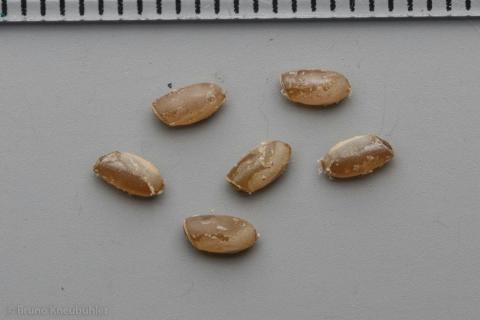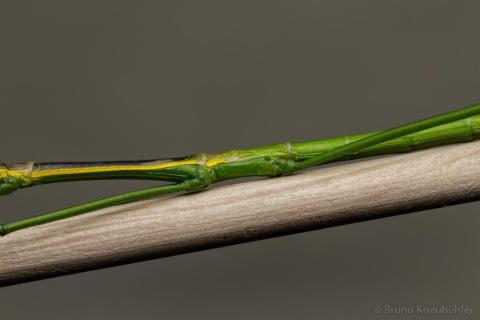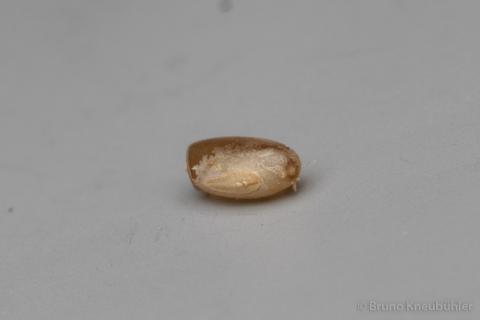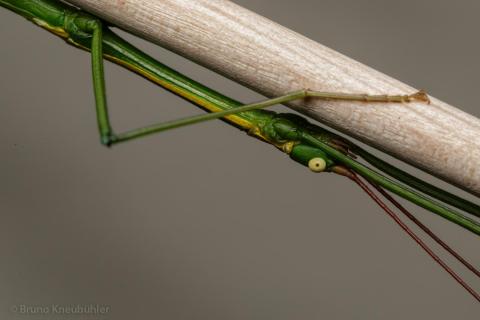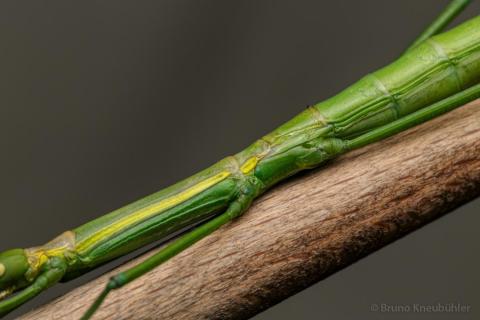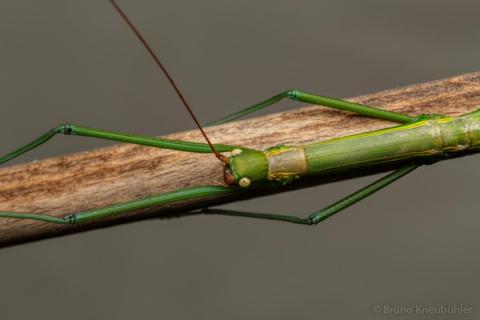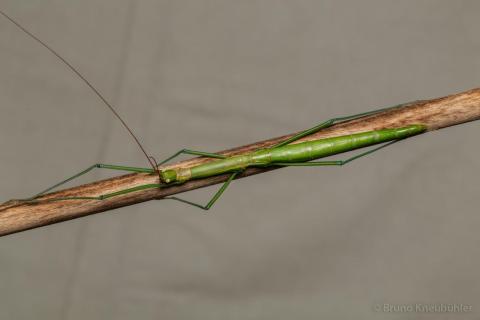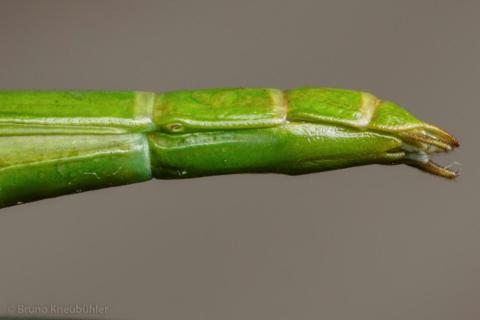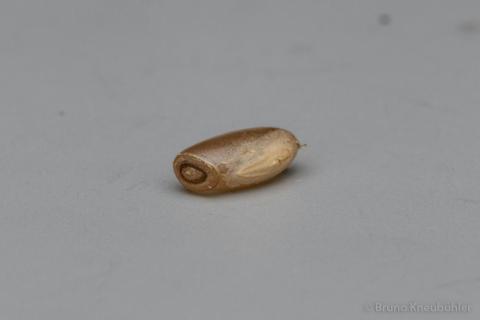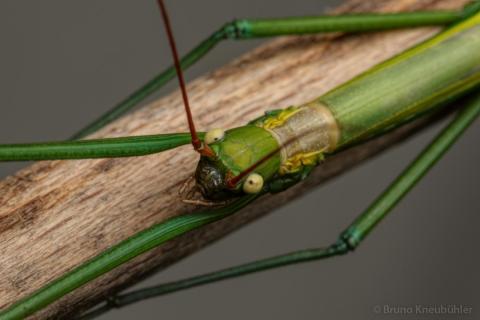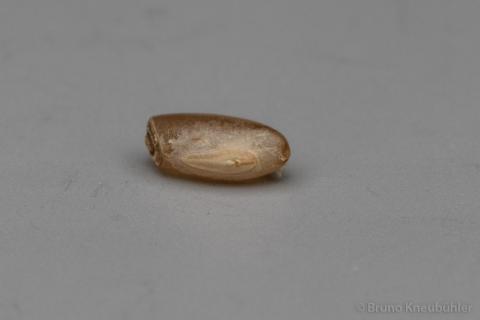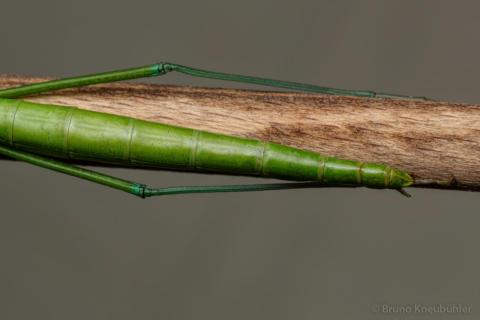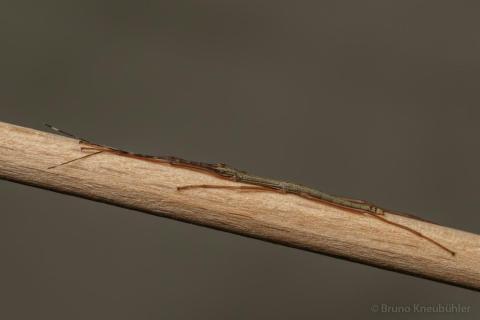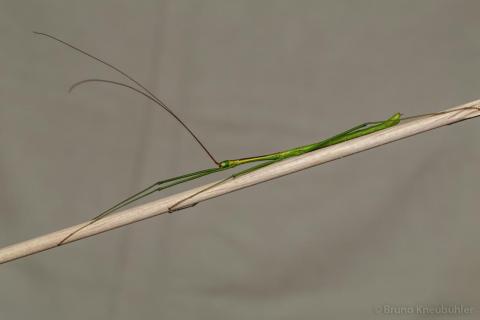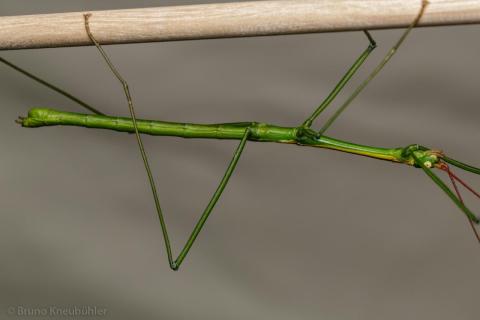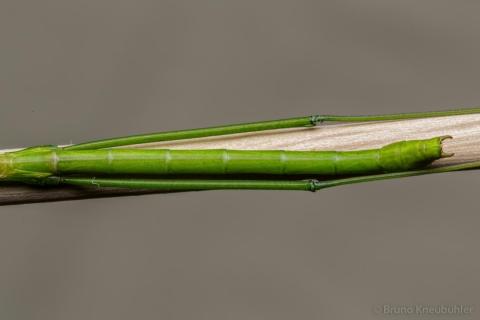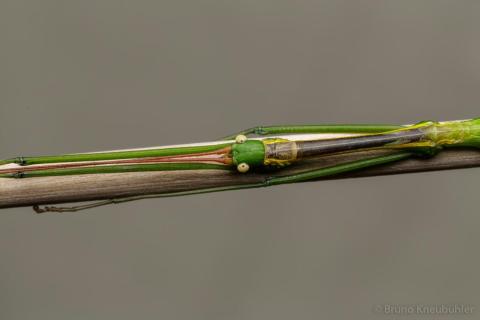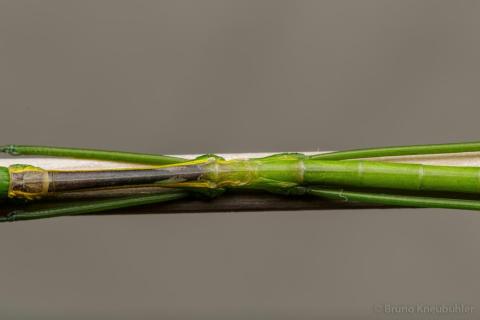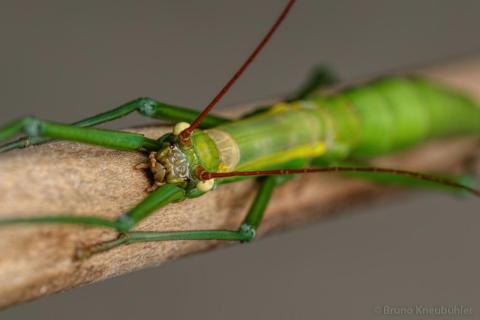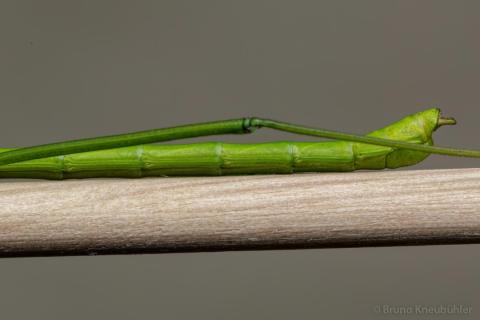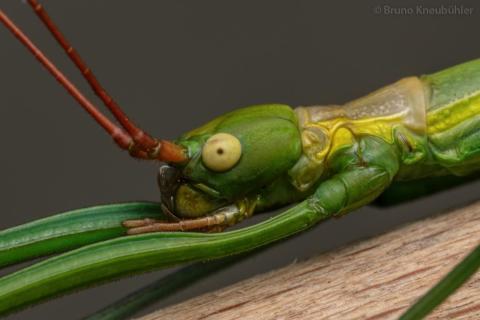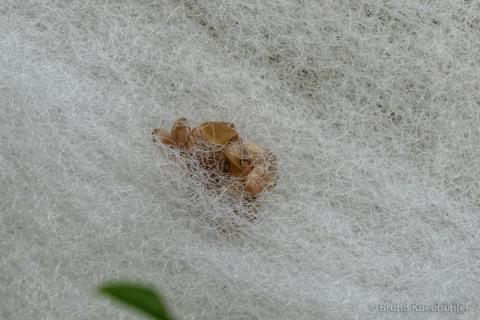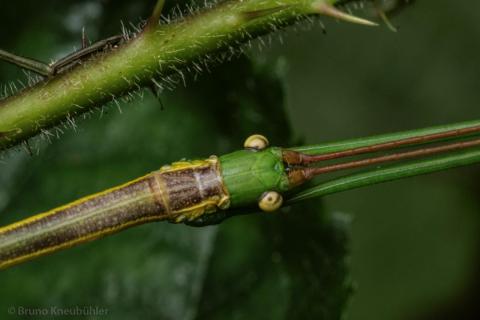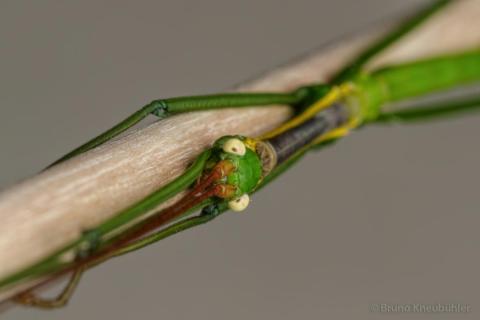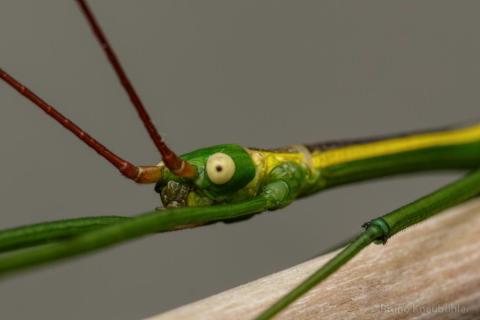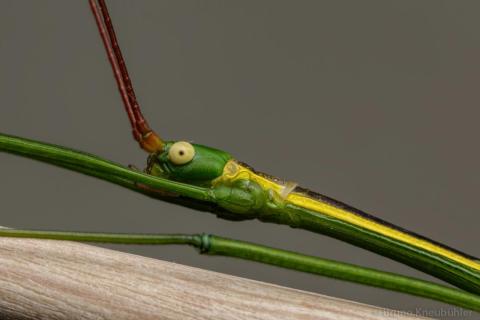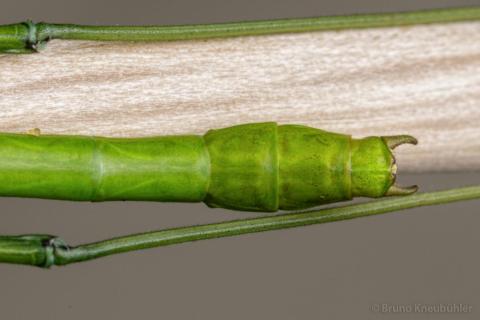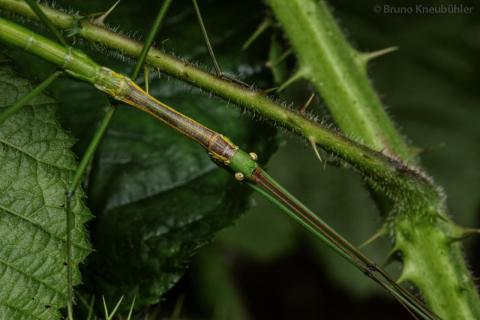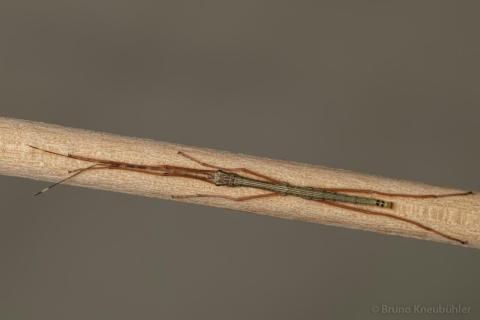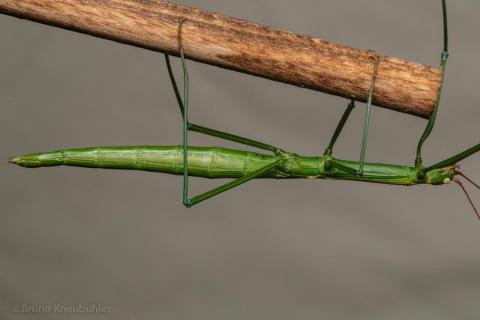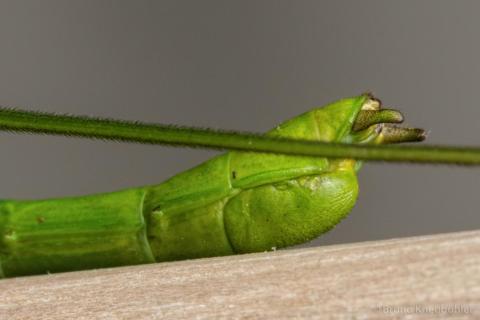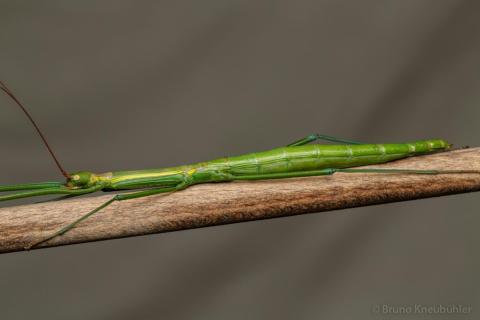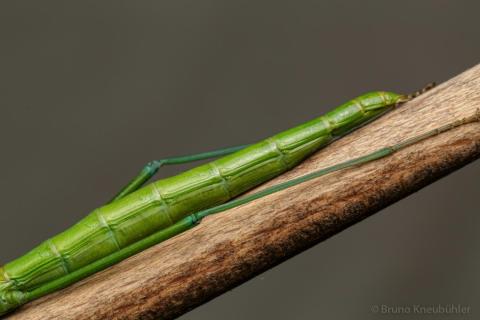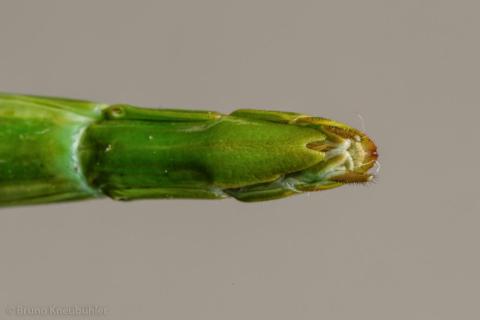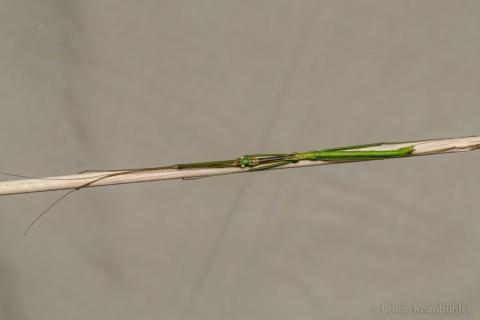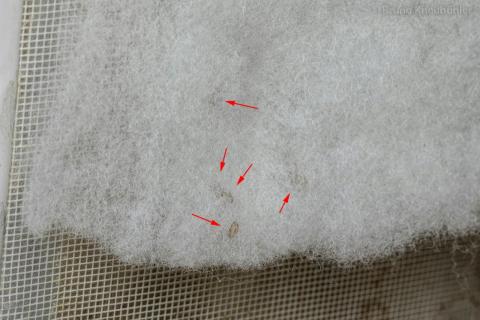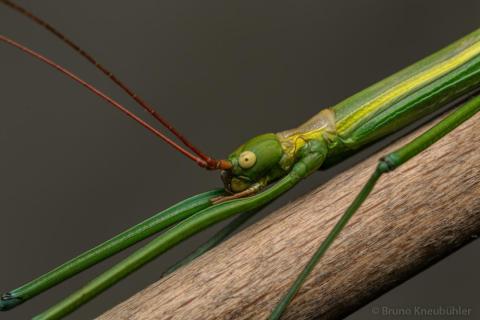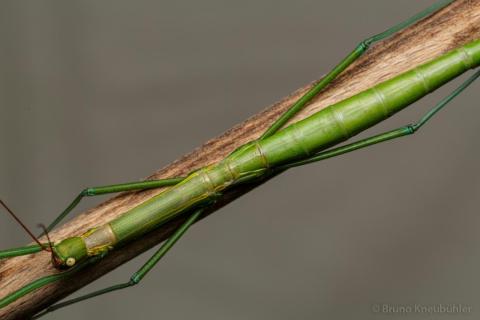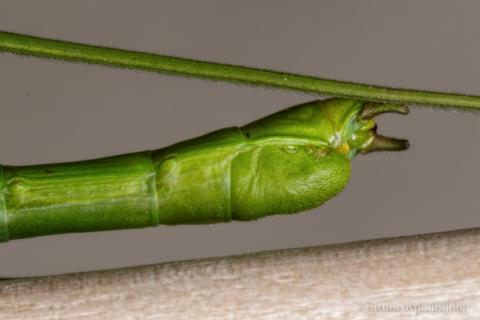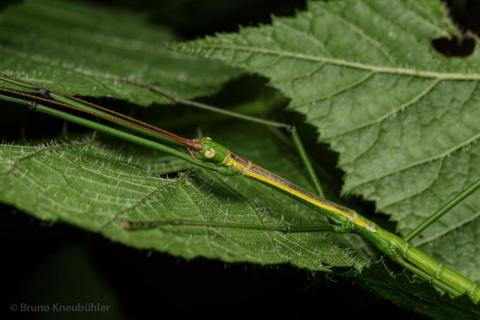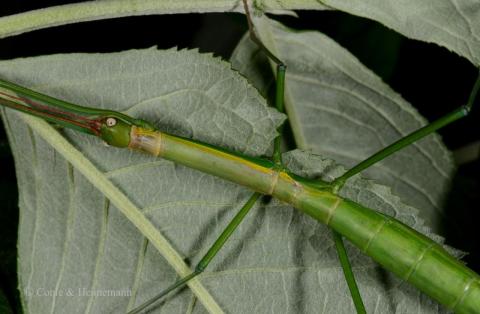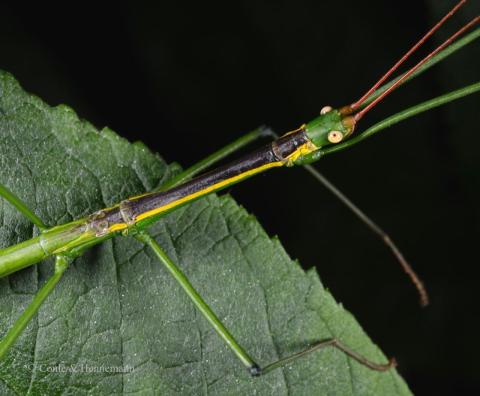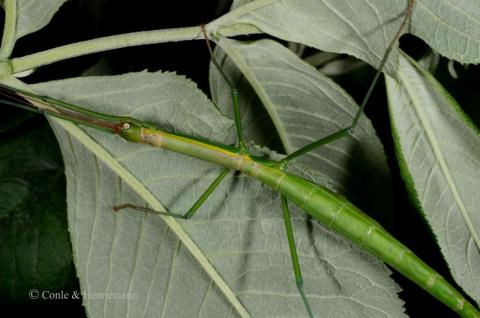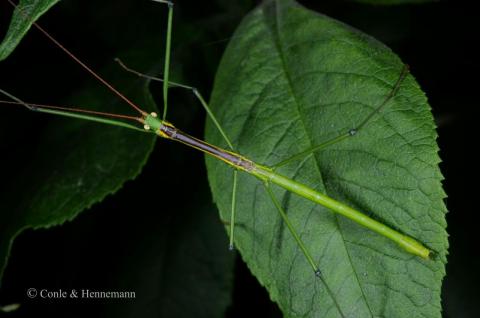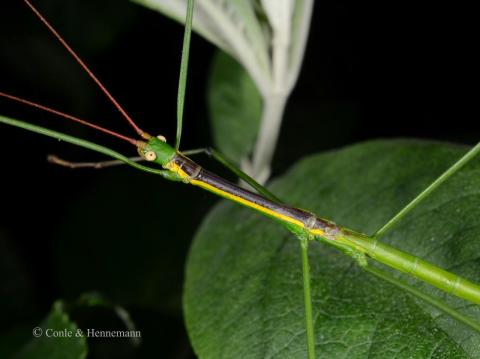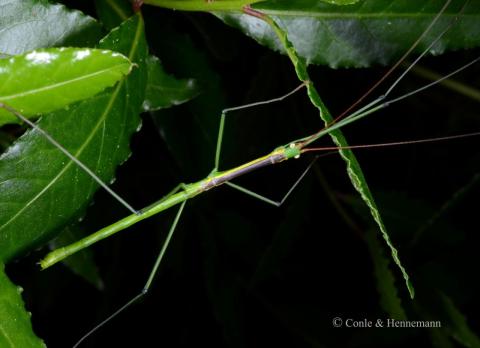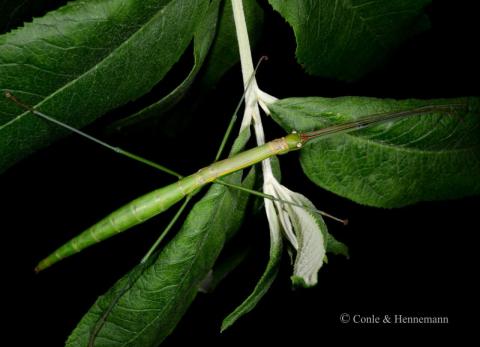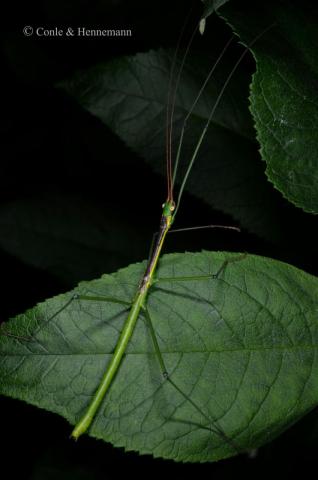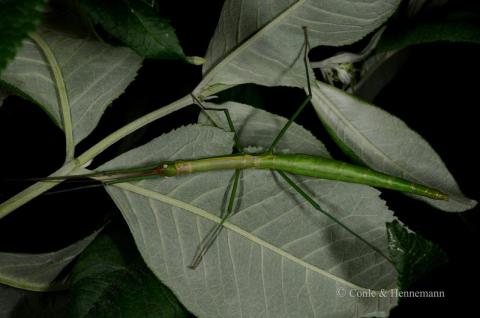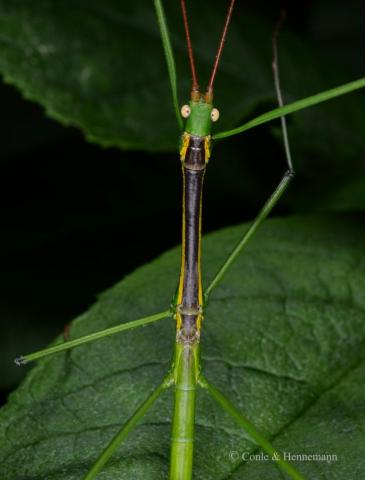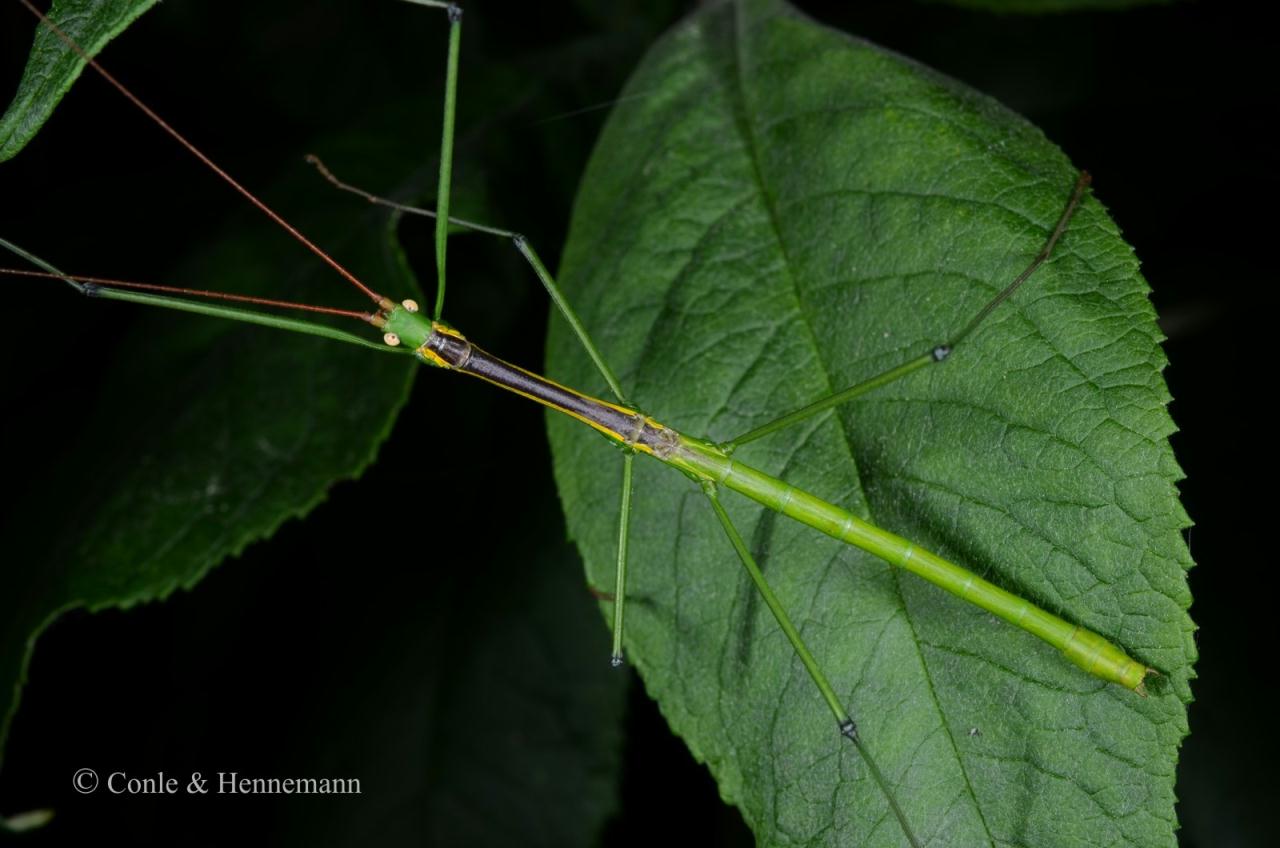
Genus
Species
Stock
CLP
753
PSG
384
Culture status
In culture
Foodplants
Privet (Ligustrum spp.)
Hypericum spp.
Lilac (Syringa vulgaris)
Breeding notes
(by Bruno Kneubuehler)
General Informations
- perviously also known as Necrosciinae sp. "Nui Chua, yellow stripe"
- provenience: Nui Chua NP (Vietnam)
- ID and taxonomic evalutaion by Joachim Bresseel (BE)
- taxonomic evaluation by Joachim Bresseel (BE)
- further taxonomical informations ➤ Phasmida Species Files
- this is a pure culture, and serious breeders are requested to avoid mixing this culture with similar populations from a different provenience. When spreading this culture to other breeders, then always use the full name with provenience
- this culture has the number CLP 753 (Online Phasma Culture List)
Females
- medium-sized, rather colorful species
- body length 9 cm
- females green with a lateral yellow stripe and red antennae
Males
- slender, rather colorful phasmids
- body length 6 cm
- bright green body and legs, lateral yellow stripe, dark dorsal thorax area, red antennae
Nymphs
- freshly hatched nymphs are brown with lengthways stripes and reddish-brown legs
- about 17 mm long
- on how to distinguish between male and female nymphs
Eggs
- 4 x 2 mm
- light brown
- a membrane on the eggs flakes off
Food Plants
- privet (Ligustrum spp.)
well accepted by nymphs and adults - Hypericum (Hypericum spp.)
well accepted by nymphs and adults - common lilac (Syringa vulgaris)
well accepted by nymphs and adults
Breeding, Behaviour
- very easy to breed
- active mainly during the night
- they can behave quite frantic and run about when being touched
- adults (nymphs too?) produce a clear defensive spray which smells a similar like Corvalol (a herbal medicine used in eastern Europe) (info by Michael Михаил Литвиненко, Russia)
- eggs are stuck into different substrates (sand in low container on cage floor, cracks of the cage, filter wool on cage floor or attached to the side of the cage)
- eggs are laid in clutches of up to 12 eggs
- 1 clutch per female every 2 - 3 weeks
- incubation (Cup-Incubation-method, on medium damp vermiculite) about 3 months at 20 - 24 °C
- eggs can be covered by vermiculite (about 5 mm high), which makes it easier for the nymphs to hatch without getting stuck in the eggs shell
- eggs of this species are not prone to get mouldy
- nymphs hatch during the night
- it is quite common in phasmids that nymphs hatch even weeks after the first nymphs - from the same batch of eggs
- a humidity of about 65 - 75 % rH seems to be good enough for nymphs and adults
- one can spray them regularly with chlorine-free water, but allow the water to dry up before spraying again
- small nymphs can be kept in a Faunabox (or a similar cage), which shall not be too small
- provide a cage of about 30 x 30 x 40 (cm, L x B x H) for 3 - 4 adult couples
- males will be adult after 3 months (at 20 - 24°C), females after 3 - 4 months
Basics of phasmids breeding
- keep only one species per cage, overpopulation is one of the main reasons for breeding failures
- keep nymphs seperate from the adults, mainly to protect them during the crucial moulting phases
- choose the cage big enough. When in doubt, too big is (usually) better than too small
- a ventilator often supports good breeding results, as it seems to increase activity and feeding
- provide enough light, but avoid direct sunlight (overheating)
- try to keep day time temperatures below 25°C
- a nocturnal fall of temperature is natural, and thus advantageous
- do not spray too much, phasmids are no fish ! Allow the water to dry up before you spray again
- minimize disturbances (loud music, commotions, light at or during the night, opening up cages in the morning [often a moulting phase] ect.)
